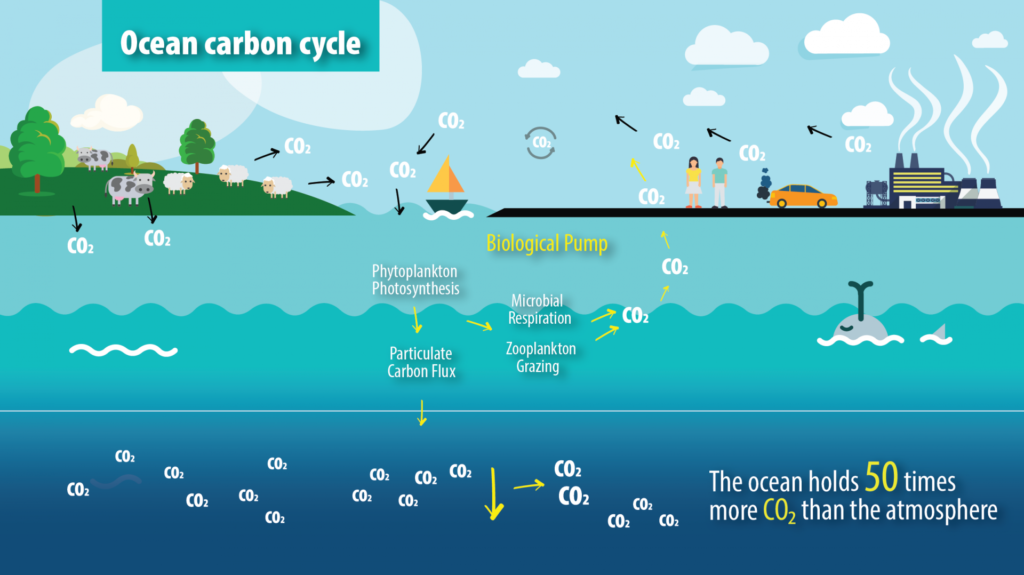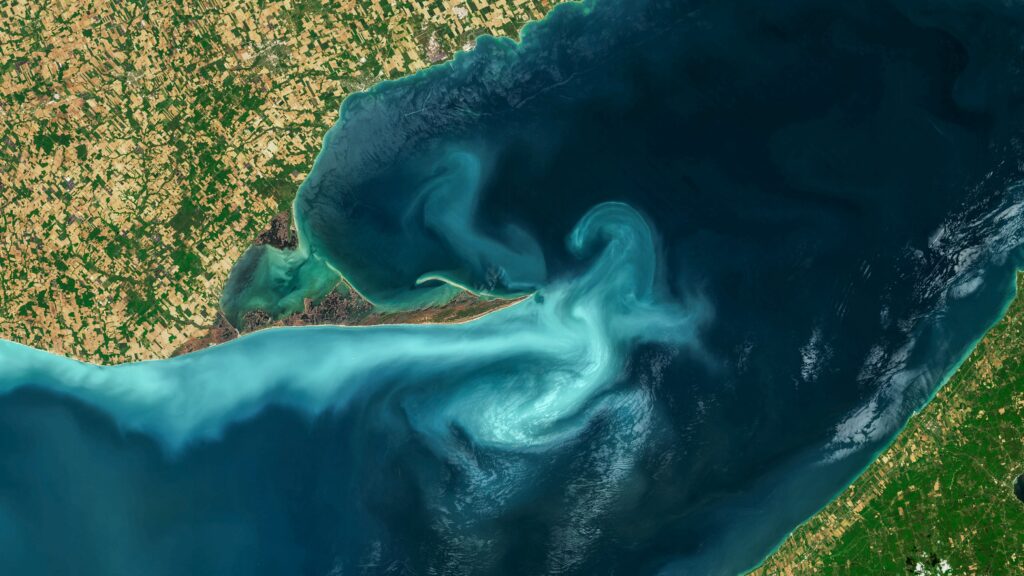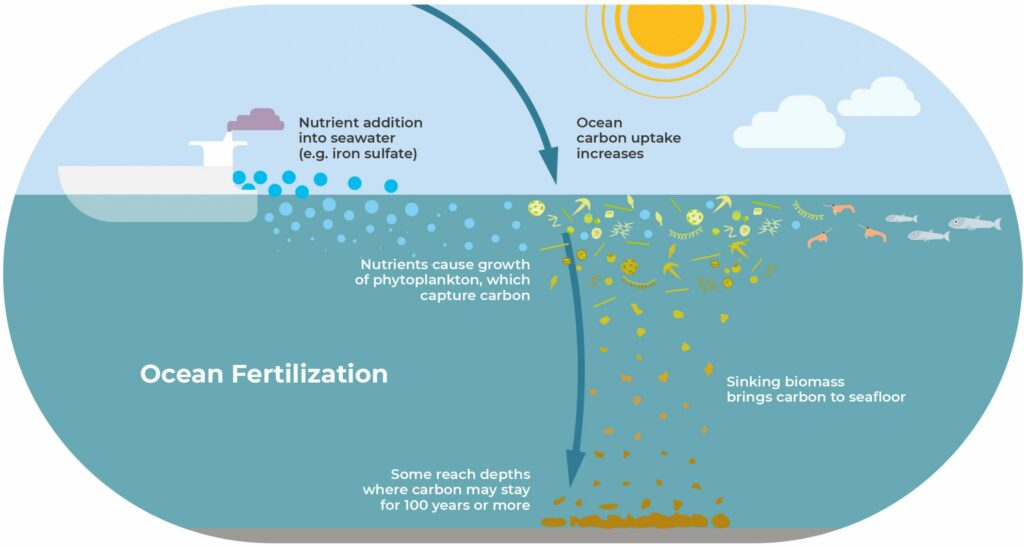Ocean Fertilisation: The New Way to Combat Climate Change?
Photo by Rich Carey
29 December 2022 – by Eric Koons Comments (0)
Ocean fertilisation (or Ocean Fertilization) may be one of the few effective ways to stimulate natural carbon sinks to increase carbon uptake. As atmospheric CO2 continues to rise, reducing carbon dioxide emissions will not be enough to limit the worst effects of climate change. Carbon dioxide removal from the atmosphere is necessary.
Human-made technologies like carbon capture and storage (CCS) will have an important role to play in this process, but the technology is currently not robust enough to handle the scale the world needs. Geoengineering presents another potential option and will likely have an important role to play in reducing atmospheric carbon. Ocean fertilisation is currently one of the leading geoengineering strategies under research.
How Does Ocean Fertilisation Work?
Oceans are natural carbon sinks and currently absorb around one-third of artificial carbon emissions. This absorption happens through two processes: atmospheric CO2 dissolving in surface ocean water and phytoplankton using CO2 for photosynthesis. These processes work hand-in-hand. CO2 enters the ocean and is absorbed by phytoplankton, leaving a lower concentration of carbon in the ocean and allowing more atmospheric CO2 to be dissolved.

Ocean fertilisation aims to stimulate phytoplankton growth to increase the amount of photosynthesis happening in the ocean. One of the leading techniques for this process is adding powdered iron to the ocean surface level. This can cause a phytoplankton bloom, which removes 50,000-200,000 carbon atoms for every iron atom.
Most of the phytoplankton is consumed by surrounding marine life, which eventually dies and sinks to the deep ocean, effectively locking the carbon there for centuries.
Ocean Fertilisation: Pros and Cons
Pros of Ocean Fertilisation – Benefits
The pros of ocean fertilisation are straightforward. It uses a naturally occurring process. There is less need for large-scale, expensive infrastructure. This is one of the drawbacks of Carbon Capture and Storage technology.
Additionally, ocean fertilisation has a relatively cheap ratio for the cost of materials for carbon sequestration. This could save the billions of investment dollars needed to make CCS technology a viable method for atmospheric decarbonisation and would allow funding to go towards other climate initiatives.
Cons of Ocean Fertilisation – Drawbacks
However, ocean fertilisation still faces naysayers. First, the technology does not have widespread implementation and is still in the research and testing stage. So far, trials show mixed results, with only a portion of experiments proving ocean fertilisation increases carbon sequestration in the deep ocean.
Second, introducing more nutrients to oceans will likely alter or disrupt existing ecosystems and food networks. Algal blooms occur regularly across the world and can create “dead zones”. These algal blooms directly result from human pollution, like rain-washed agricultural fertilisers that stimulate algae growth.
We need more research before we can come to a definitive conclusion on whether ocean fertilisation is viable.

Ocean Fertilisers Examples
We often think of iron as the sole option for ocean fertilisation. However, there are a variety of macronutrients that can stimulate algae growth. As a result, there are many potential types of ocean fertilisation under research.
Ocean Iron Fertilisation
Iron plays an important role in several biological processes of algae, like photosynthesis and respiration. However, iron is not common in some areas of the ocean (particularly the open ocean), and it is often a limiting resource for aquatic plant life. Adding iron to these iron-deficient regions allows algae to harness other compounds that are already present and grow in larger quantities.
Other Compounds for Fertilisation
Besides iron, plants require several other compounds to survive. Some of the other most sought-after compounds are nitrogen and phosphorus.

Nitrogen Fertilisation
Nitrogen is bountiful in the atmosphere, so its introduction to the oceans may seem unnecessary. However, atmospheric nitrogen is not available to plant life. Before plants can use nitrogen, it needs to be processed by bacteria into a bioavailable form. This makes nitrogen a common limiting nutrient to plant growth.
As a result, most fertilisers used on land primarily consist of bioavailable nitrogen. This process can be applied to oceans, where bioavailable nitrogen has the potential to stimulate algae growth.
Phosphorus Fertilisation
Like iron and nitrogen, phosphorus is another essential limiting macronutrient for plant life. For the same reasons as nitrogen, introducing phosphorus can stimulate algae growth in a phosphorus-deficient ecosystem.
Considering Ocean Fertilisation
Although it may seem straightforward, the complexity of nutrient interactions in ocean ecosystems can create devastating and unintended consequences. With dying coral reefs, marine pollution, overfishing and coastal development increasing, the ocean is not as resilient as it once was.
However, this does not mean there is no place for ocean fertilisation in the world’s effort to fight global warming. Instead, it means the strategy needs further research and thorough assessments before application in each specific use.
by Eric Koons
Eric is a passionate environmental advocate that believes renewable energy is a key piece in meeting the world’s growing energy demands. He received an environmental science degree from the University of California and has worked to promote environmentally and socially sustainable practices since. Eric’s expertise extends across the environmental field, yet he maintains a strong focus on renewable energy. His work has been featured by leading environmental organizations, such as World Resources Institute and Hitachi ABB Power Grids.
Read more